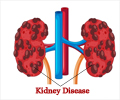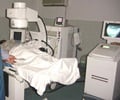Development of a method of isolating biospecimens that could lead to a less costly, less invasive and more accurate way of diagnosing chronic kidney disease is being made by researchers.

TGen's customized procedure produced high amounts of protein-rich urinary exosomes, which are microscopic vesicles that could help scientists discover biomarkers leading to better diagnosis and treatment of CKD.
TGen's findings were published today in the journal Kidney International, part of the Nature Publishing Group.
"Our method of extracting exosomes from urine is simple, fast and easily adapted to clinical research, so we can ultimately help physicians provide better therapies for their patients," said Dr. Johanna DiStefano, Director of TGen's Diabetes, Cardiovascular and Metabolic Diseases Division, and the study's senior author.
The goal of the study was to identify the best exosome isolation methods for both proteomic analysis and RNA profiling of urinary exosomes as a first step for biomarker discovery.
"Unlike a kidney biopsy — an invasive and expensive procedure that provides only a small sample from one of two kidneys — urinary exosomes provide a full representation of the entire urinary system," said Dr. Lucrecia Alvarez, a post-doctoral fellow at TGen and the study's lead author.
Advertisement
One of the six methods in the study tested was based on a commercially available exosome precipitation reagent called ExoQuick-TC, which by itself did not yield high quantities or pure preparations of protein and RNA. However, the TGen modification of the protocol led to the highest yields of miRNA and mRNA, which can subsequently be used in downstream genetic profiling experiments.
Advertisement
Biomarkers can serve as indicators of normal biological processes, disease development or response to therapeutic drugs.
"In contrast to renal biopsy, urine is an ideal source of biomarkers, particularly for diseases of the kidney and urinary tract because it can be conveniently collected in large amounts without risk to the patient," said Dr. DiStefano.
TGen's method of isolating exosomes in urine is an improvement over the use of today's mostly commonly used centrifuge processes. The current method is time-consuming, requires expensive equipment, can only process low volumes, and only a few samples of urine at a time, which makes it unsuitable for clinical use.
Another current method is ultrafiltration, which tends to retain unwanted proteins that interfere with the isolation of exosomal proteins.
"Faster and more efficient methods of isolating exosomes are needed," Dr. Alvarez said. "The method we developed provides strong potential for identifying and characterizing exosomal biomarkers from urine, which presents favorable implications for the diagnosis and treatment of chronic kidney disorders."
Source-Eurekalert















